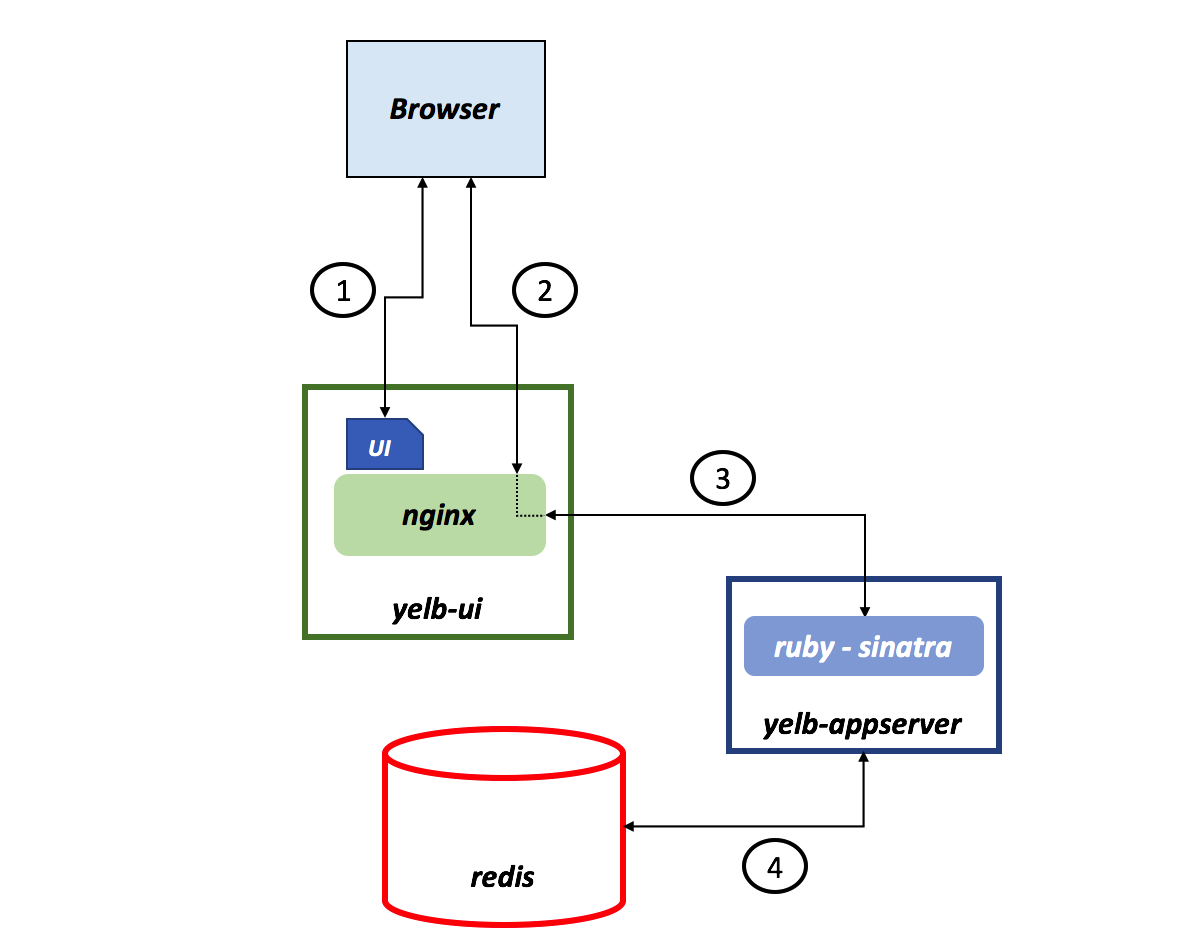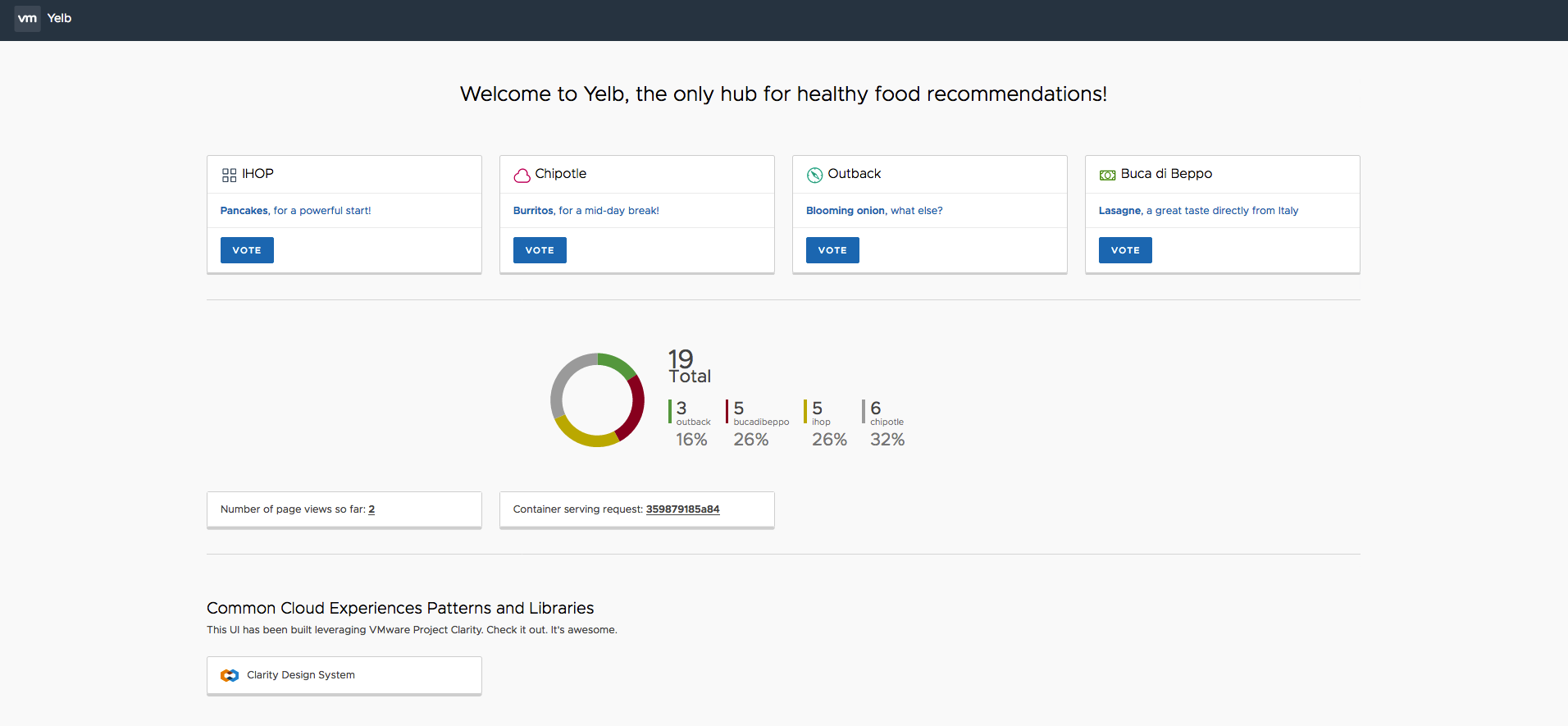Yelb is an app I wrote from scratch (leveraging existing frameworks and tools such as Sinatra, Clarity and others).
I have built it for a couple of reasons:
- while there are dozens of demo/test apps out there, I think that having an app that you know 100% end-to-end and that you know inside out is something useful (if nothing, you will learn/experience one or more programming languages)
- building a set of assets to deploy the application on multiple platforms (e.g. Docker, Kubernetes, Rancher, CloudFoundry, OpenShift, ECS, etc etc). Owning the application itself makes this task easier, more useful and more interesting.
As far as reason #1 goes, I found very interesting dealing with the challenges (at the edge of dev and ops duties) of starting and coordinating the application modules in specific environments (development, test, production). This is often achieved in specific programming environments leveraging system variables (e.g. RACK_ENV for ruby, other mechanisms for Angular2, etc). You will see some of these configurations in actions in the localdevelopment and localtest instructions (inside the deployments folder). Building an application from scratch and packaging it using Docker while honoring this flexibility is a very interesting (learning) exercise.
The current architecture layout is pretty straightforward.
There is a front-end component called yelb-ui that fullfills a couple of roles (they could even be split if need be). The first role is to host the Angular 2 application (i.e. the UI of the Yelb application). When the browser connects to this layer it downloads the Javascript code that builds the UI itself. Subsequent requests and calls to other application components are proxied via the nginx service running on yelb-ui.
At the time of this writing the only application component that exists is yelb-appserver. This is a Sinatra application that basically read and write to a third component which is the redis-server backend database (the third component of the Yelb application). At this point Redis is used more as a backend data base than as a memory cache. In the future it may be possible to insert a true backend system (e.g. Mongo) to store "transactional" data and keep using Redis for storing less critical information.
The picture below shows the architecture of Yelb:
Yelb allows users to vote on a set of alternatives (restaurants) and dynamically updates pie charts based on number of votes received. In addition to that Yelb keeps track of number of page views as well as it prints the hostname of the yelb-appserver instance serving the API request upon a vote or a page refresh. This allows an individual to demo the application solo, or involving people (e.g. an audience during a presentation) asking them to interact by pointing their browser to the application (which will increase the page count) and voting their favorite restaurant.
This is how the UI looks like at this point:
The nature of the app allows people to experiment with the statless yelb-ui and yelb-appserver components (think scaling out, blue/green depoyments, etc.) as well as experiment with the stateful redis-server backend component (think leveraging persistent volumes, etc.).
If you intend to contribute, fork or understand anyway how the single components work I suggest you dig into each of them looking at the code (and the various dockerfiles) to learn how they work and how they are packaged. In addition to that you should look into the deployments folder how to start the application in development mode and test mode.
If you intend to use Yelb as a generic application with the ultimate goal of learning and playing with container platforms, then you should probably go straight into the deployments folder and specifically in the platformdeployment folder. This is where all the various configuration files for the various platforms exist (or will exist). This folder will ideally be a continuous work in progress.
- There is a subtle issue when you browse the app for the first time where the browser console shows errors. This is likely due to problems with variables not initialized properly. This needs further investigation. The app works just fine and there is no evidence of the problem unless you inspect the page and go to the console outputs.
- There is a ton of optimization that could be achieved both in the application code as well as in the packaging constructs (e.g. Dockerfiles). The package in its current form works but it is far from being considered optmized.
- While the intent was to build an application whose layers could scale out (and scale independently) in a classic microservices scenario, very little testing has gone into multi-container deployment scenarios so far. Most of the tests have been done with one (1) container per layer.

